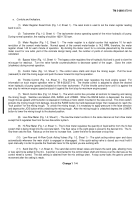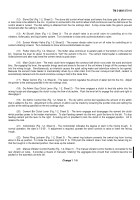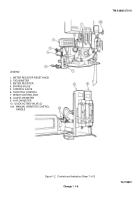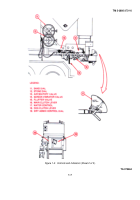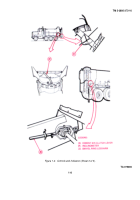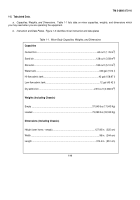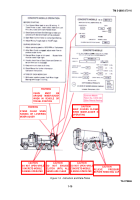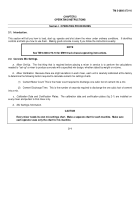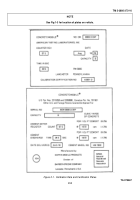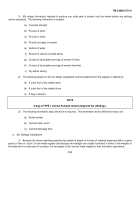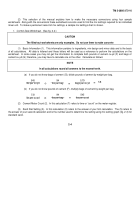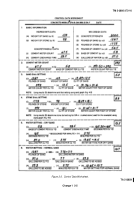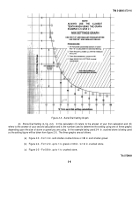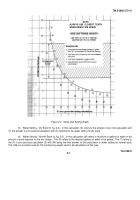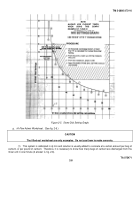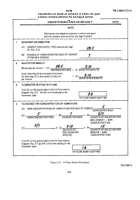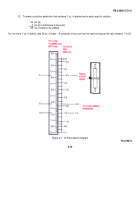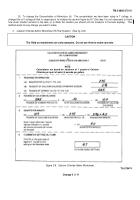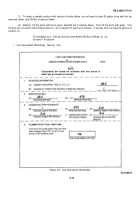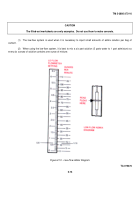TM-5-3895-372-10 - Page 22 of 184
TM 5-3895-372-10
(2) This selection of the manual explains how to make the necessary conversions using four sample
worksheets. Along with the conversions these worksheets are also used to find the mix settings required for an individual
mixer unit. To make a permanent record of mix settings, a sample mix settings chart is shown.
f. Control Data Worksheet.
(See fig. 2-2.)
CAUTION
The filled-out worksheets are only examples. Do not use them to make concrete
(1) Basic Information (1).
This information pertains to ingredients, mix design and mixer data and is the basis
of all calculations.
All data is lettered and these letters will be used as a reference to perform the calculations on the
worksheet.
In some cases you may not get the information to complete both pounds of cement cu-yd (F) and bags of
cement cu-yd (G); therefore, you may have to calculate one or the other. Calculate as follows:
NOTE
In all calculations round all answers to the nearest tenth.
(a) If you do not know bags of cement (G), divide pounds of cement by weight per bag.
545
94
5.79
lbs per cu yd
÷
lbs per bag
=
bags per cu yd
=
5.8
(b) If you do not know pounds of cement (F), multiply bags of cement by weight per bag.
5.8
94
545
lbs per cu yd
×
lbs per bag
=
lbs per cu yd
(2) Cement Meter Count (2). In this calculation (T) refers to time or “count” on the meter-register.
(3)
Sand Dial Setting (3).
In this calculation (X) refers to the answer of your first calculation. The (S) refers to
the answer of your second calculation and is the number used to determine the setting using mix setting graph (fig. 2-3) for
standard sand.
2-4
Back to Top

